FutureofWorking.com | Career Advice for the Future
When giving a speech or presentation, how you start can make or break you. You want the beginning to be strong and instantly pull your audience in so that you have their full attention from the get-go. Here are 25 effective ways to start a speech or presentation. 1. The Common Ground Open Opening with a real life experience, goal or interest is a great way to grab the attention of the audience to show them that they can gain something by listening to you. By establishing common ground with the audience, especially if it is done with humility and grace, you put yourself on the same level as your audience. If you are an elderly CEO of a company and you discuss finances with a group of younger entry-level employees, you have to share your own business experiences when you were younger so that the audience will better understand your message. 2. Ask a Question If you want to make your audience think right away, ask them a question to start your speech. Ask either a rhetorical or literal question. Whether or not an answer to that question is called for, when people are posed with a question that matters to them, they will intuitively answer. When you ask a question, raise your hand to indicate what you want the audience to do. After asking a question like 'How many people here are self-employed?', see if any audience members raise their hands. Take advantage of this engagement by getting into the heart of your speech. 3. Quote Sometimes it is as easy as opening with a relevant quote. You can set the tone for the rest of your speech if you have a quote that is memorable. You should keep in mind that whoever you quote has to be well known by the audience because if it is someone like your next-door neighbor, the quote will fall flat with everyone. If you are discussing topics related to politics, for example, it is wise to quote a former United States President. 'If there is anything that a man can do well, I say let him do it. Give him a chance.' -Abraham Lincoln 4. The Contrast Open If speeches feel like boxing matches to you, this type of opening would often be used. Showcase the difference between diametrically opposed concepts, positions, ideas or words, and the end result will be that some audience members will feel persuaded to change their perspective or embrace something new. There are always two sides to every story, and both sides have to be equally presented. What are the differences between a need and a want? Obstacles and opportunities? Problems and solutions? Highlighting the differences will get audiences to understand the points you are trying to make. 5. Tell a Story Before making the key points of your speech, telling a story to start can draw your audience in. Some of the most powerful words that can immediately grab the attention of the audience would be 'Once upon a time' because regardless of age people will love stories of any kind. When you start your speech with a line like 'Once upon a time', the audience will know that a story is coming. People will immediately calm down, become quiet, and listen to what you have to say. Whether it is fiction or non-fiction, telling a story will resonate with audience members. 6. Imagining Something If you want people to go on a unique journey with you, encourage them to imagine certain scenarios. For example, if you are working for a non-profit organization that brings water to people who lack the resources to get water, a good opener would be something like 'Imagine being thirsty all the time, but never having anything to drink.' By having them imagine scenarios like that, you make the audience a part of your presentation. They can actively empathize and engage with the content of your speech because they actually put themselves into that setting. 7. Humor Though this should never be forced onto the audience, when properly implemented you will put a lot of smiles on the faces of those you speak to. Being funny during a speech can be very difficult, but it is a way to give yourself relief as a public speaker. Telling jokes in your opening is a sign to the audience that you don't take yourself too seriously, and that they can relate to you in some way. One witty opener would be 'If you can hear me, please start clapping as to confuse those that cannot make out what I am saying.' 8. 'This Day In History' Open One main reason why audiences gather to listen to speeches is that they can learn something. If you start your speech with a historical fact, the audience will immediately pay attention. For example, if the day of your speech falls on March 5, you would open your speech with 'On this day, March 5, 1963: the Hula Hoop, a hip-swiveling toy that became a huge fad across America when it was first marketed by Wham-O in 1958, is patented by the company's co-founder, Arthur 'Spud' Melin. An estimated 25 million Hula Hoops were sold in its first four months of production alone.' 9. Thank the Organizers and Audience If you want to stick to the basics of public speaking, simply mention the people who made it possible for you to have a presentation. Thanking the event organizers and the audience compliments them, makes them feel proud and happy about your presence, and strongly connects you to the audience. Refer to the person who introduced you to one or more of the senior people in the organization in the audience, and compliment that person as a showing of respect. Be humble and genuine in your positive comments toward the organization. 10. Positive Statement Staying positive throughout a speech can be challenging, but it will become easier if you start your speech with a positive statement. You can begin by telling the audience how much they will like and appreciate what you have to say. For example, you could say something like 'You're really going to enjoy the time we spend together today. I'm going to share with you some of the most thought-provoking ideas my company has ever made.' The upbeat tone of this opening is enough to make the audience invested in whatever follows. 11. The Skeptical Audience Open A doubting audience is a difficult audience to handle. From the start, they may not trust your ideas or they could be against what you are proposing. Whether they were disappointed in the past or if they are simply stuck in their ways, they will put up a brick wall in front of you. The more hostile the crowd, the faster you must address the gap. Blending your goals and the needs of the audience requires a careful combination of anticipating the major objections, avoiding defensiveness, acknowledging the obvious truths early, and understanding the divided loyalties between the intractable, the undecided, and the supportive. Identify which of those must hear your message and adjust accordingly. 12. The Puzzle Open Brain teasers and mind puzzles tend to capture the attention of audiences that like to be given mental exercises. As the audience tries to figure out what it will take to solve them, they become highly engaged with the practice. Capitalize on this behavior by proposing a riddle, asking a puzzling question that you promise to reveal in the end, and suggesting that the audience complete a mathematical equation and promising to give the answer context as you go along during the speech. Alternatively, reveal one puzzle piece after another throughout the course of your speech to help your audience find the right solution. 13. Refer to Current Events Bringing documentation of something that is currently relevant to the public will help you to illustrate your point the way you want to. Use a current event story that is on the front page of your local newspaper to transition into your subject, and hold it up as you refer to it in your introduction. This serves as a visual image to the audience that they will keep in their minds as they see you hold up this documentation. When they hear you recite or read a key point of the news story, they will carefully pay attention to you. 14. Refer to a Recent Conversation One way to keep the topic you wish to talk about relevant to the audience is to refer to a recent conversation you had with someone attending this public speaking event. Hours or minutes before you get on stage to address the audience, you could be engaging in a thought-provoking conversation with someone in a lobby, and that person might tell you that this is one of the best times to be working in a specific industry. It is likely that many audience members will share the same view as that person, so when you mention this conversation in your introduction they will have something to relate to. 15. The Activity Open An active audience is one that will be more likely to keep listening to you after you finish your introduction. Keeping an audience preoccupied with an activity works well during training sessions and workshops when you are trying to teach a specific skill. Engaging in activity right from the start allows the audience to recognize the benefits of listening to your message. The activity has to be fun but also challenging enough. If they quickly get through it they will spend the rest of the workshop sitting in their chairs doing nothing. 16. The Study Hall Open If you are someone who loves using data-heavy charts and graphs to illustrate your points, you have to be careful about how you present your data to the audience. While they want to be informed, people in the audience also don't want to be bombarded with too much information all at once. Establishing a school setting and distributing paper handouts of data to your audience to begin your session helps them to follow along. Ask them to read the charts and graphs, and following their review you are well on your way to making your key points. 17. The PowerPoint Open When PowerPoint technology is used correctly it is a highly effective tool for the audience. Otherwise, it immediately makes your presentation feel boring. Slides that are overly literal will fall flat, but conceptual and eye-catching images give strength to your words. Pick captivating and intriguing images. If you present a talk on how to make ice cream, you could begin with a slide that shows the finished product of your ice cream brand. Describe the process of making ice cream in your introduction, and as you proceed you show slides in reverse, moving from final product to the very beginning. Along the way, you guide the viewer through each step. 18. The Audio Clip Open Your voice remains front and center for your talk, but additional sounds can bring more clarity to your message. Your words will be given more meaning with the help of a short audio clip as it makes your message more memorable. If you are teaching a music school, you can include two brief audio excerpts, a before and after of student instruction. Though your words do matter, these clips can have a better impact in persuading students to join your school. Audio testimonies, song recordings, oral accounts, and speech snippets all make for good audio clips. 19. Silence A subtle pause of silence, even if it extends to only 10 seconds, gives your audience enough time to sit and quiet down. Most audiences expect a speaker to begin right away. If you want to get the attention of an audience, taking that extra pause will help your cause. People will start wondering why you are being so quiet as they gather around, and when you break your silence and start speaking you can use that pause to illustrate a key point. Sometimes the main challenge in public speaking events is to get the audience into a silent state. 20. The Challenge Open Audiences want to be challenged and motivated to contribute to something they feel passionate about. Open your speech with a challenge if you are looking to increase sales, raising money for a project, asking for volunteers, or wanting legislative change. It isn't just about buying into your message but also taking the actions to manifest it. Start your speech with something like this: 'Leaders see possibilities where followers see obstacles. I am here today to call for leaders to encourage those who are unsure about the project to look past the stumbling blocks we face in the development of this local park and consider giving citizens a better environment.' 21. Multiple Choice Test Presenting your own multiple-choice test can draw your audience to your topic, and this approach is tailor-made for a talk with multiple perspectives about an issue or different solutions to the same problem. An example of this open would be to say the following: 'As a company, we have several routes we can take regarding growth and increased sales. We could a) buy smaller companies to diversify our portfolio of services, b) move resources to focus on only a few, or c) we could opt to franchise. After we evaluate these options together, I will offer the option that I think is the way for us to go.' 22. The Mystery Open The odds are likely that your audience loves to solve mysteries. Whether they are read in books or watched on television, mysteries grab the attention of people simply because of the uncertainty that is wrapped around them. When using this open present some clues on stage, regardless of which side of the argument they lean towards. Remind the audience of these clues throughout the speech and encourage them to come up with their own conclusions before revealing how your mystery gets solved. 23. Have Audience Members Talk to Each Other All audiences will be sitting close together in a setting where they will be visible in front of you, so you might as well take advantage of this. Encourage people to talk to others that are sitting next to them, and specifically to let them know what they would like to learn from your speech. Encourage your audience to discuss with each other any particular points. Any commands or show of leadership on your part will easily influence the audience, as long as you do it with confidence. 24. Bring Up Statistics Even if you don't bring any charts or graphs to illustrate your points, simply mentioning important statistics will resonate with the audience to get your message across the right way. Statistics have the potential to trigger the emotional appeal of the audience. One example of presenting statistics in your open would be something like: 'In 2019 there were 152,000 homeless people roaming the streets in California. By 2025 that number is expected to nearly double.' This kind of open highlights the need to address the problem of homelessness because the statistic is powerful, personalized and surprising. 25. The Unexpected Definition Open Dictionaries are obviously accurate, but there are times when words gain more power when they are redefined. If you are a valedictorian and you want to share how much your fellow students mean to you, the open can go like this: 'The dictionary defines classmate as a member of your class, but my definition for you all is much broader than that. We were friends, teammates, and mentors. As worthy opponents, we challenged each other on the field and in the classroom. And, we now can define ourselves as fellow graduates.' Conclusion How you start your presentation will depend on what kind of presentation you are giving, and what tone you want to set for your audience. Regardless of which you choose to begin with, incorporating one of these strong tools into your speech ensures that your presentation is a success from the very start.
Blog URL: https://futureofworking.com
Blog is ranked 10,700 out of 14,605 blogs.
Blog Software: Wordpress
Theme: generatepress
Blog Allows Comments:
No or not known
Blog Allows Guest Posts:
No or not known
Blog Uses Disqus:
No or not known
Blog Uses CommentLuv:
No or not known
Blog has RSS Feed: Yes, here
Blog Monetized Using Amazon:
Unknown
Blog Monetized Using Google Adsense:
Unknown
Domain registration date: 24 January 2013
(updated 25 January 2024)
Domain registrar: GoDaddy.com, LLC
Domain expiry date:
24 January 2025
Keywords: interview, answers, examples, resume, objective, statement, ways, assistant, leadership, employee, workplace, employees, style, career, traits, dental, internship, taco, bell, nursing, principal, clerical, burger, king, librarian, mechanical, engineer, security, guard, advice, impressive, characteristics, retention, strategies, work, boost, morale, happy, productive, signs, boss, motivate, underperforming, benefits, gender, diversity, constructive, feedback, managers, transactional
Niches
This blog has been tagged with the following niches:
career advice mechanical engineering career advice career advice career advice career advice
Click on a tag to view more blogs in this niche as well as view blog posts you can comment on.
Key to Niche Colour Coding:
: less competitive niche
: quite competitive niche
: very competitive niche
: not yet researched by
![]() SakiAI
SakiAI
Reliability: Excellent reliability. 0 issues detected in 1,389 days.
Recent Blog Posts
- {{item.Name}} {{item.Date}}
Related Blogs

Trade Brains | Learn to Invest
https://tradebrains.in

All Abroad | Travel. Culture. Politics. Lifestyle.
https://travelabroad.blog

Industrial Heating Element Manufacturer | Datec Coating
https://dateccoating.com

Onlinejobs.lk - Job Vacancies, Gazette, Courses, Exam Results
https://www.onlinejobs.lk

Daily Writing Tips
https://www.dailywritingtips.com

karmaCRM - CRM Software for Small Businesses
https://www.karmacrm.com

Seek Business Capital
https://www.seekcapital.com

Home • ERIN OUTDOORS
https://erinoutdoors.com

The Daily Utah Chronicle
https://dailyutahchronicle.com

Crossfit MPH - Movement. People. Health.
https://www.crossfitmph.com
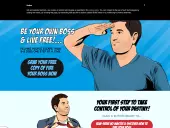
Serve No Master
https://servenomaster.com

Wild Vibrations
https://www.mywildvibrations.com
Find even more related blogs by using the search facility in the top menu to search for related keywords.
Related Discussion Boards
These discussion boards appear to be similar to this blog. Forum listings are supplied courtesy of our sister directory site FindAForum.
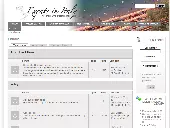
Forums
http://www.expatsinitaly.com/forum/
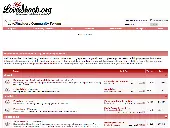
LoveShack.org
https://www.loveshack.org/forums/
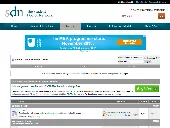
Student Doctor Network
https://forums.studentdoctor.net/
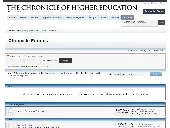
Chronicle Forums
http://chronicle.com/forums/
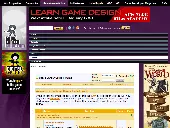
Game Career Guide Forums
http://www.gamecareerguide.com/forums/

MoneyMakerGroup
http://www.moneymakergroup.com/forums.html
Change Logs
Recent updates to the FindABlog listing for FutureofWorking.com | Career Advice for the Future:
| Activity | Date and Time | Status |
|---|---|---|
| Updated blog's domain ownership information. | 31 July 2024 05:58 | |
| Updated blog's ranking. | 31 July 2024 05:58 | |
| Updated blog's domain ownership information. | 20 July 2024 16:28 | |
| Updated blog's domain ownership information. | 18 May 2023 04:11 | |
| Updated WordPress blog's post data. | 18 May 2023 04:11 | |
| Updated blog's domain ownership information. | 05 March 2023 06:43 | |
| Examined WordPress blog's hyperlinks. | 05 March 2023 06:43 | |
| Updated blog's domain ownership information. | 26 October 2022 21:47 | |
| Updated blog's ranking. | 26 October 2022 21:47 | |
| Updated blog's domain ownership information. | 10 September 2022 16:51 | |
| Checked WordPress blog's commenting activity. | 10 September 2022 16:51 | |
| Updated blog's domain ownership information. | 12 July 2022 13:33 | |
| Updated WordPress blog's post data. | 12 July 2022 13:33 | |
| Updated blog's domain ownership information. | 08 June 2022 23:03 | |
| Updated blog's Social Media, Podcasting and commenting status. | 08 June 2022 23:03 | |
| Updated blog's domain ownership information. | 20 May 2022 23:24 | |
| Updated blog's Social Media, Podcasting and commenting status. | 20 May 2022 23:24 | |
| Updated blog's domain ownership information. | 02 May 2022 06:11 | |
| Updated blog's domain ownership information. | 21 April 2022 18:40 | |
| Wrote blog's executive summary. | 16 March 2022 22:57 |
https://futureofworking.com added to FindABlog 02 February 2021 (Blog #11348). Entry last modified 31 July 2024.



